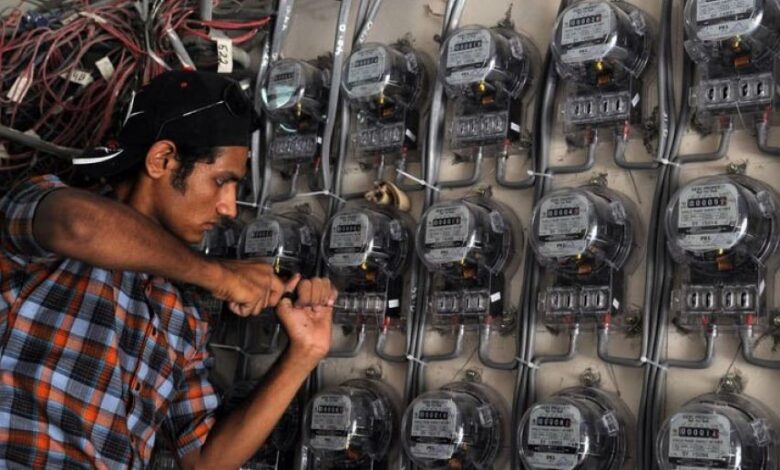How Energy Meters Detect Tampering

Energy meters, including traditional electromechanical and modern smart meters, incorporate multiple mechanisms to detect and prevent tampering. Below is a detailed breakdown of the methods used to identify unauthorized manipulations.
1. Magnetic Tampering Detection
Traditional electromechanical meters rely on a rotating aluminum disc influenced by magnetic fields. Placing a strong external magnet near the meter can disrupt this field, slowing or stopping the disc. To counter this, modern meters use ferromagnetic shielding (such as mu-metal) to block magnetic interference. Some also integrate Hall-effect sensors to detect abnormal magnetic fields and log tampering events. Smart meters take this further with built-in magnetic sensors (like reed switches or magneto-resistive sensors) that trigger an alarm if a magnet is detected. Advanced models may also use differential current measurement to identify discrepancies caused by magnetic tampering.
2. Reverse Current or Tilt Detection
Fraudsters sometimes reverse live and neutral wires to exploit meter calibration errors. Modern meters detect this through bidirectional current measurement and flag reversed connections. Another tampering method involves tilting the meter to interfere with its operation, especially in prepaid systems where meters are installed vertically. To prevent this, some meters include tilt sensors (accelerometers) that log events if the device is moved beyond a specified angle.
3. Neutral Line Disconnection or Bypass
Disconnecting the neutral wire can cause the meter to under-record consumption. Smart meters detect neutral failure by monitoring voltage imbalances or using a reference ground connection. Another tactic involves bypassing the neutral by connecting it to the earth wire, diverting current illegally. Meters combat this by checking for unexpected current paths and flagging discrepancies.
4. Earth Wire Bypass (Theft via Grounding)
Some theft methods involve diverting current through the earth wire instead of the neutral. Smart energy meters use Residual Current Measurement (RCM) to detect imbalances between live and neutral currents, indicating possible theft. Additionally, some meters analyze neutral-to-earth voltage to identify illegal grounding.
5. Unauthorized Physical Access (Case Opening or Seal Breaking)
Traditional meters use tamper-evident seals that break if the cover is opened, making tampering visible during inspections. Smart meters enhance security with electronic tamper detection, such as microswitches, light sensors, or capacitive sensors that detect when the meter cover is disturbed. These events are logged and can be reported in real-time via Advanced Metering Infrastructure (AMI).
6. Current Clamping or Shunting (Direct Bypass of Meter)
A common tampering method involves placing a shunt wire parallel to the meter to divert current. Smart meters detect this by analyzing current imbalances (differences between incoming and outgoing current) or unexpected voltage drops. In three-phase meters, fraudsters may manipulate current transformers (CTs), but advanced meters use self-monitoring CTs and pulse validation to detect such tampering.
7. Abnormal Load Patterns (Data Analytics for Theft Detection)
Sudden drops in recorded consumption or erratic usage patterns can indicate tampering. Smart meters use machine learning algorithms to analyze historical data and flag anomalies. If voltage is present but no current is recorded, it suggests a possible bypass.
8. Remote Tamper Alerts (Smart Meter Anti-Tamper Features)
Smart meters provide real-time alerts to utilities via RF, PLC (Power Line Communication), or cellular networks when tampering is detected. Events such as magnetic interference, case opening, or reverse current are stored in non-volatile memory for forensic analysis.
9. Firmware & Cybersecurity Protections (Preventing Hacking)
To prevent firmware tampering, smart meters use secure boot processes and cryptographically signed firmware updates. Communication between the meter and utility is encrypted (AES-128/256), and some meters include physical protections like epoxy-sealed PCBs or tamper-responsive chips that erase encryption keys if opened.
Legal & Penalty Measures
Utilities impose severe penalties for meter tampering, including fines (sometimes up to 10x the estimated stolen energy) and criminal charges. In some jurisdictions, electricity theft is a felony punishable by jail time. Smart meters enable utilities to take remote actions, such as disconnecting the meter or switching it to prepaid mode until an inspection is conducted.
Conclusion
Modern energy meters employ a multi-layered approach to tamper detection, combining hardware sensors, firmware protections, and data analytics. Smart meters, in particular, enhance security through real-time monitoring and automated alerts, making tampering increasingly difficult to conceal. If you need details on specific meter types (e.g., three-phase, IoT-based, or DC meters), further technical insights can be provided.
Interesting Facts & Statistics About Energy Meter Tampering
-
Global Electricity Theft Costs $96 Billion Annually
- The World Bank estimates that electricity theft results in $96 billion in losses each year, with developing countries being the most affected.
-
India Loses $16 Billion Annually to Power Theft
- India has one of the highest rates of meter tampering, with around 20% of electricity generated being stolen, costing the sector $16 billion per year.
-
Brazil’s “Gatos” (Illegal Hookups) Drain $10 Billion Per Year
- In Brazil, illegal meter bypasses (called gatos or “cats”) account for nearly 25% of distributed electricity, leading to massive revenue losses.
-
Smart Meters Reduce Theft by Up to 80%
- Utilities that replaced traditional meters with smart meters saw electricity theft drop by 60-80% due to real-time tamper detection and remote monitoring.
-
Magnetic Tampering is the Most Common Method
- In a study of meter tampering cases, over 40% involved strong magnets to slow down or stop electromechanical meters.
-
The FBI Investigates Large-Scale Meter Tampering Rings
- In the U.S., organized crime groups have been caught installing “meter reversal devices” to reduce bills. The FBI has prosecuted cases involving millions in stolen electricity.
-
Pakistan’s “Kunda” System (Illegal Hookups) Affects 30% of Power
- In some Pakistani cities, 30% of electricity is consumed illegally through direct wire hookups, bypassing meters entirely.
-
AI-Powered Theft Detection Can Predict Tampering Before It Happens
- Some utilities now use machine learning algorithms to analyze consumption patterns and predict tampering with 90%+ accuracy.
-
A Single Tampered Meter Can Cost $10,000+ in Lost Revenue
- High-consumption users (like factories) using bypass methods can steal thousands of dollars’ worth of electricity per month.
-
The First Known Case of Meter Tampering Was in 1880
- Shortly after the invention of electric meters, people were already reversing meter discs to undercount usage—showing that tampering is as old as metering itself.



